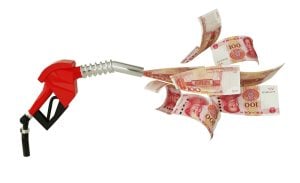The Model of Resource Efficiency
Our portfolios are systematically constructed based on extensive proprietary research. Through the standardisation of unstructured environmental data, our research process gives context and comparability to corporate environmental disclosures by objectively comparing the environmental balance sheets of companies across 34 industry sectors. Our evidence-based approach, through the stripping out of subjective data, measures sustainable action over intent.
The environmental data and sustainability insights we collect grow more significant by the year. Our resource efficiency database (MoRE) dates back to 2005, and covers over 1000 companies in the developed markets. We believe it is one of the most extensive repositories of environmental data in the world. This gives Osmosis a deep perspective on a company’s relative resource efficiency.
Thought Leadership

Even politics can’t get in the way of this rally
On the face of it, everything looks rosy in the equity markets, but a look under the hood suggests not all is as it seems.

The Role of Carbon Pricing in Combating Climate Change
Mechanisms, Implementation and Impact.

Could EU Anti-Subsidy Measures do more Harm than Good?
Implications for Chinese Green Technology and Europe’s Net Zero Transition Goals

Environmental Data: New research suggests emerging markets have cleaned up their act
Osmosis just concluded a 16 month corporate environmental data research project across emerging markets.

Emerging Markets Insights: Sustainability Disclosure Regulations
Osmosis IM provide a high-level overview of the local regulatory landscapes in emerging markets.


